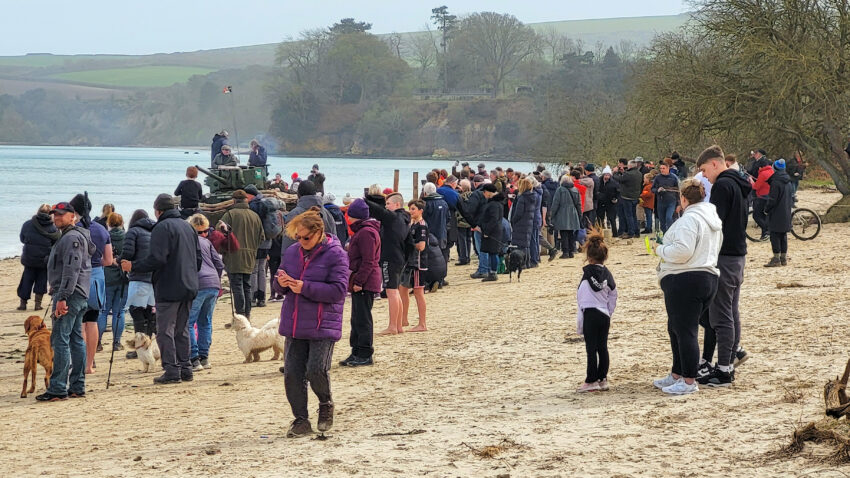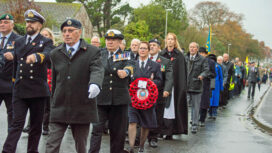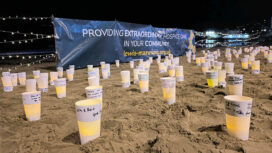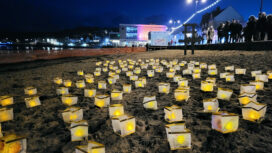Hundreds of people gathered on the beaches of Studland in Dorset to remember those who risked their life testing an experimental floating tank which helped turn the tide of World War Two on D-Day.
Six men lost their lives when the Duplex Drive Valentine tanks sank in Studland Bay 80 years ago as the weather turned and waves overtopped the canvas skirts of the 40 tonne war machines, which were the only things keeping them afloat.
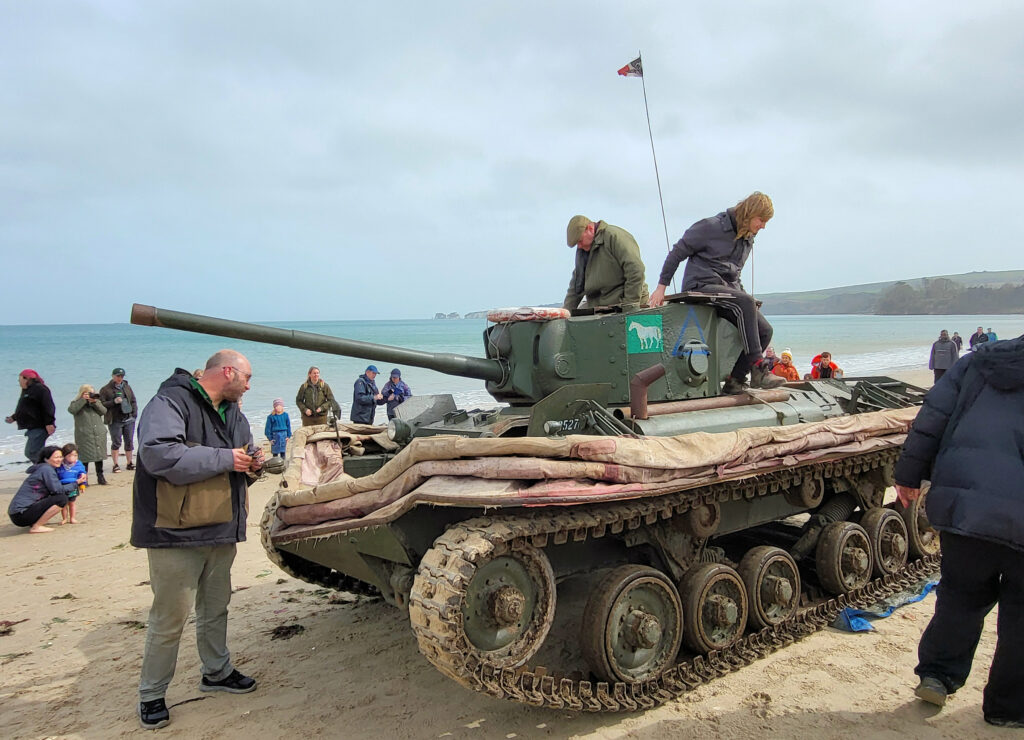
The last surviving DD Valentine tank returned to the beaches of Studland where it took part in Exercise Smash 80 years ago
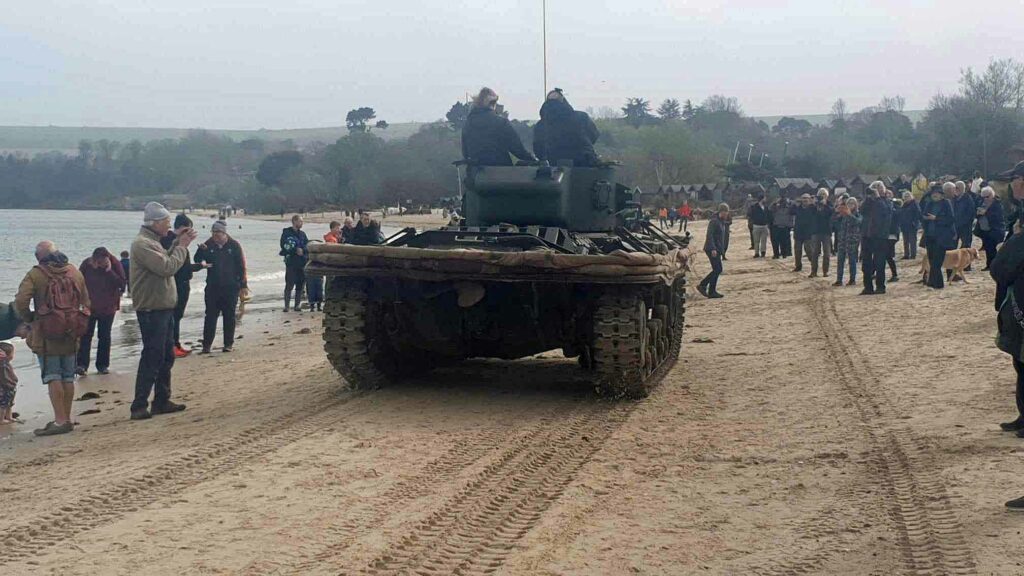
The unusual sight in Studland Bay drew the crowds
Sacrifices were not in vain
But Simon Ford, the son of Lieutenant Robert Ford – the only survivor from one of the sunken tanks who later rose through the ranks to become a General – said that the sacrifices of Exercise Smash were not in vain.
Simon Ford was a guest of honour at a Ministry of Defence memorial service held at Fort Henry, overlooking Studland Bay, on Thursday 4th April 2024 to commemorate the 80th anniversary of Exercise Smash at Studland.
The service was taken by Major Graeme Greene of the 4th 7th Royal Dragoon Guards and two veterans of World War Two, Albert ‘Reg’ Fox and Hugh ‘Cecil’ Newton of the Royal Dragoon Guards were also present.
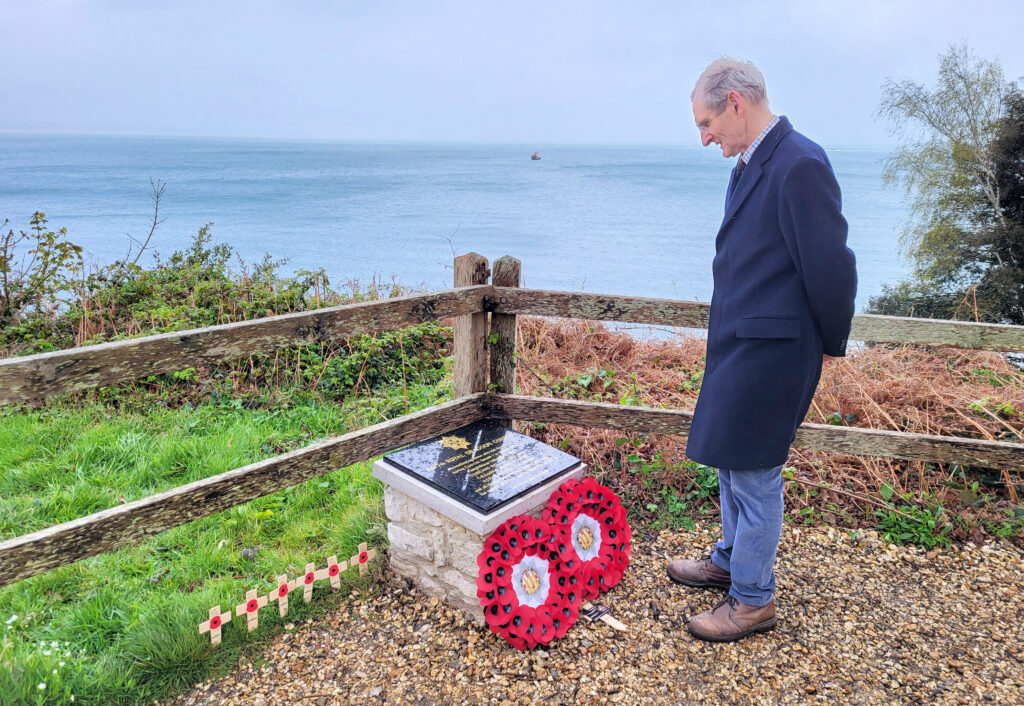
Simon Ford, whose father survived his tank sinking during Exercise Smash, reading the words on the memorial at Fort Henry
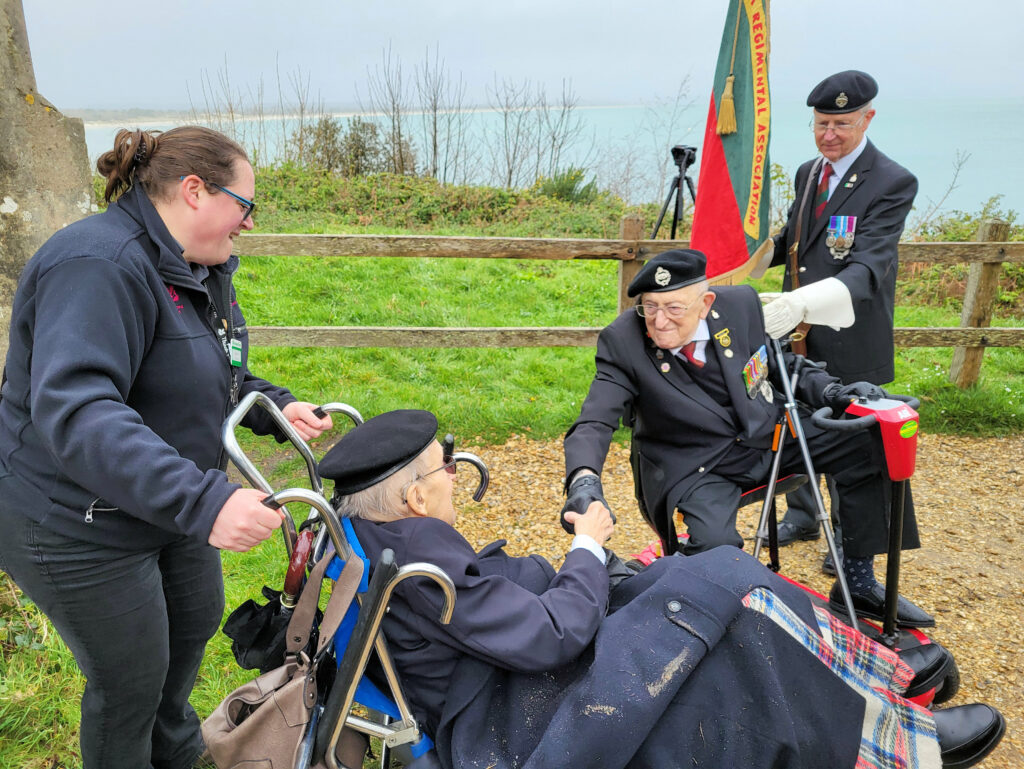
Veterans of World War Two, Albert ‘Reg’ Fox and Hugh ‘Cecil’ Newton of the Royal Dragoon Guards, aged 100 and 99, met up again
Memorial to those who lost their lives
The service took place overlooking the bay where 10,000 men took part in the exercises, watched over by King George VI, Winston Churchill and General Dwight D Eisenhauer.
Wreaths were laid at a memorial to the six servicemen who lost their lives in the exercise when their tanks sank – Lieutenant C.R. Gould, Sergeant Hartley, Corporal Park, Trooper Kirby and Trooper Petty, all of C Squadron, and Corporal Townson of B Squadron.
Smash, a collection of four exercises in April 1944, was a top secret rehearsal of the landing plans for the Normandy landings which would take place two months later and included the first action for amphibious tanks.
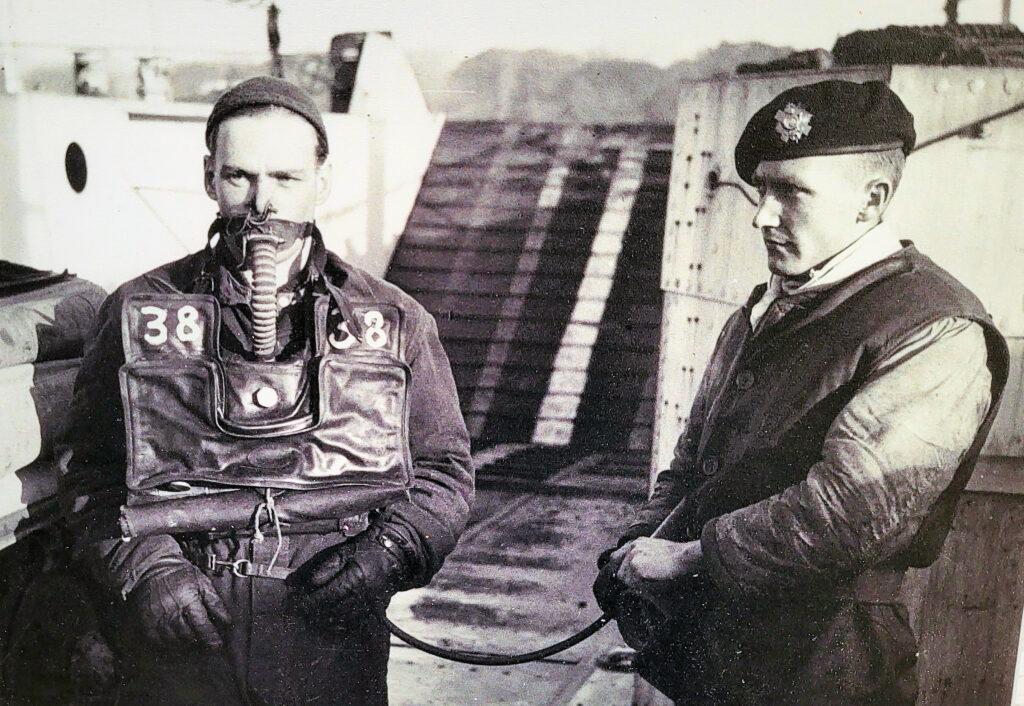
Lieutenant (later General Sir) Robert Ford (left) is equipped with rudimentary breathing apparatus in case of an emergency
“Valuable lessons were learned”
Simon Ford said:
“The training had been very comprehensive, and the squadron was given underwater breathers in case they did sink, which they tested out in swimming pools.
“But on the day, the tanks were launched in a very heavy swell, in a matter of minutes the wind got up to around force five, the waves grew bigger and the tanks began to get into difficulties.
“Although six tanks went down and another went aground, valuable lessons were learned which saved future lives and the 4/7s in their DD Valentine tanks played a very important role in the Normandy landings thanks to what happened here and during the rest of their training.”
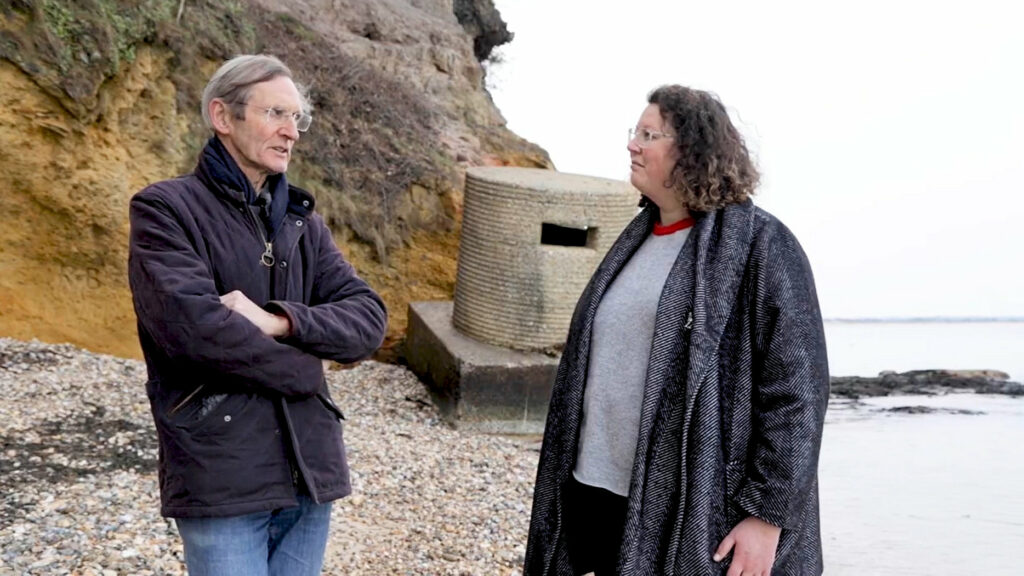
Father and daughter Simon and Polly Ford remember the actions of Robert Ford at the spot where his ashes were eventually scattered
“In our hearts we knew we had little chance”
In a film made by granddaughter Polly Ford, using family recordings, Lieutenant Robert Ford described Exercise Smash:
“In April 1944 we did the first really major exercise at Studland Bay where they had built a replica of the beach we were eventually going to land on in Normandy.
“So we sailed out into midchannel, turned around and given the order to launch at about 6,000 yards out, in pitch dark. The sea was pretty rough and in our hearts we knew that we had little chance of reaching the shore.
“We were on the surface of the water after coming off the landing craft and becoming increasingly apprehensive. The water was coming in very fast and although we had small pumps, they were just not effective, we were taking in water far faster than we could pump it out.
“The weight of the water against the canvas was just too great. We knew we weren’t going to make it. We were still floating and all four of us were standing on the top of the tank. Then a great wave crashed over the top and we sank to the bottom.”
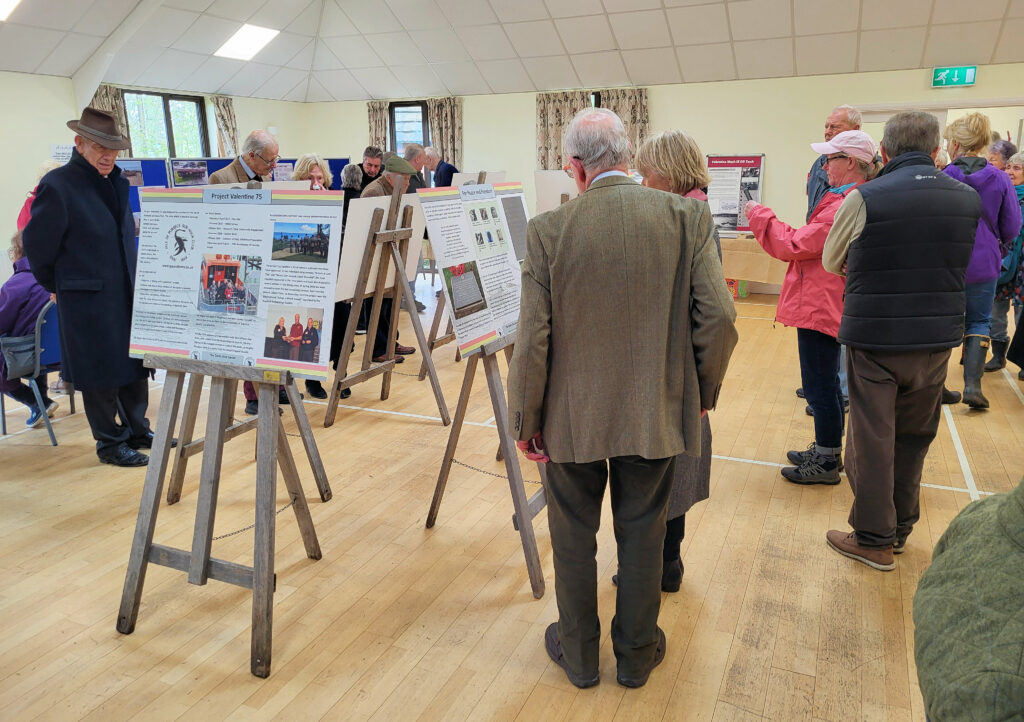
An exhibition telling the story of Exercise Smash was held at Studland village hall
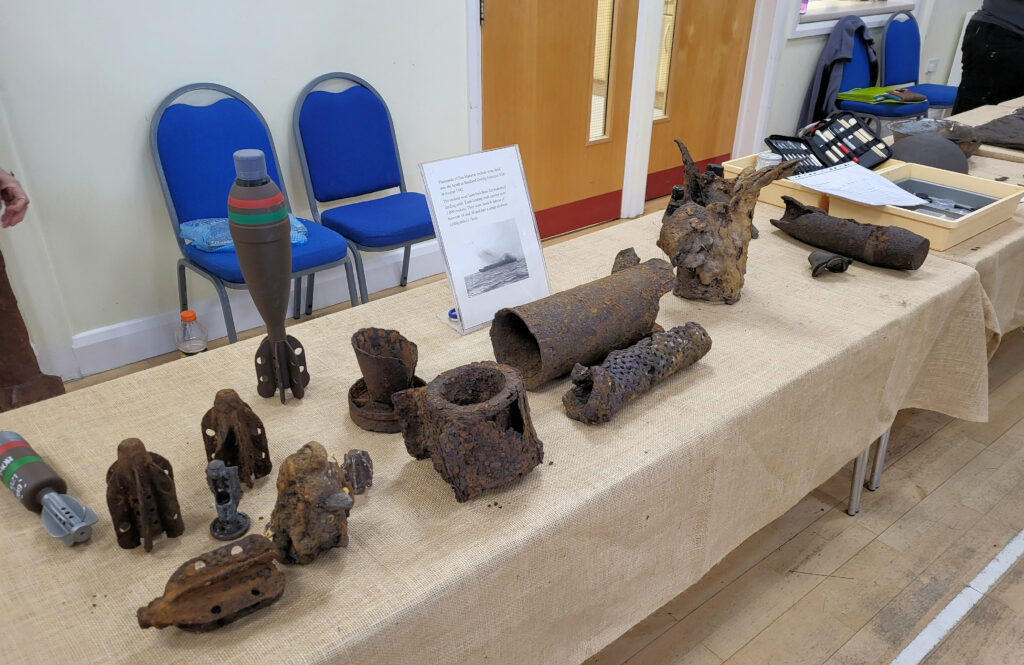
Some of the World War Two munitions which were subsequently found around Studland
Relics from wartime Studland
The story of Robert and the other men who took part in the exercises has been told in an exhibition staged in Studland village hall, along with displays of medals, munitions, photographs, Pathe film reels and relics from wartime Studland.
There were also tributes from the Isle of Purbeck Sub Aqua Club, who have dived the wrecks of the sunken tanks and annually lay a wreath in memory of those who lost their lives.
Nick Reed from the sub aqua club gave a talk about diving the sites of the sunken tanks, with other talks at the village hall given by Major Graeme Green about Exercise Smash, and by John Pearson about the restoration of his Valentine tank which took part in exercises at Knoll beach.
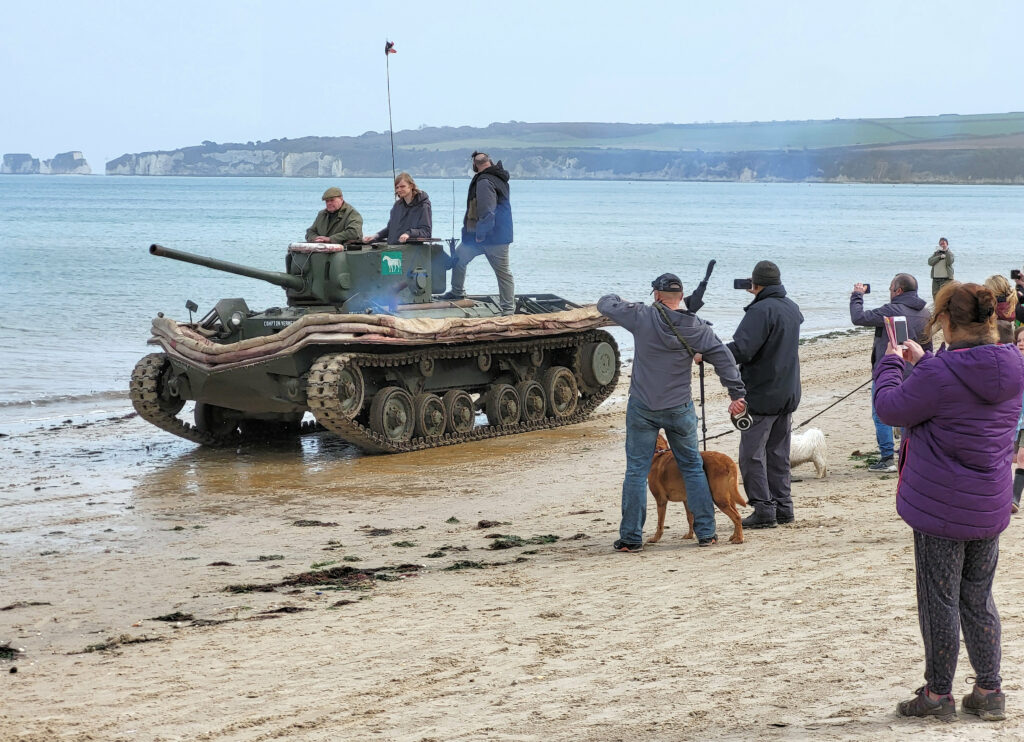
John Pearson and his crew take the DD Valentine tank, which he lovingly restored over so many years, onto Knoll Beach, Studland
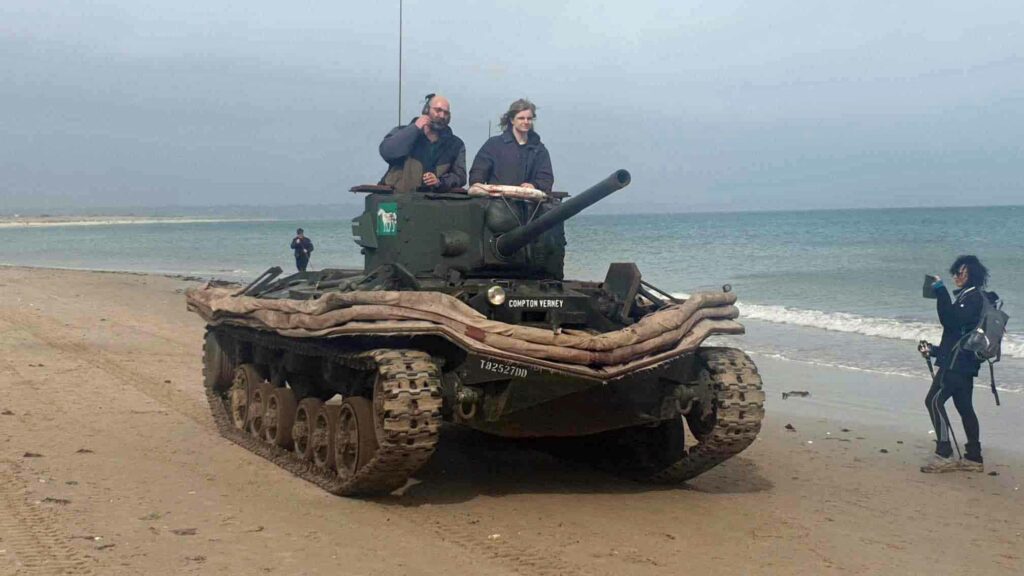
Lots of people took photos
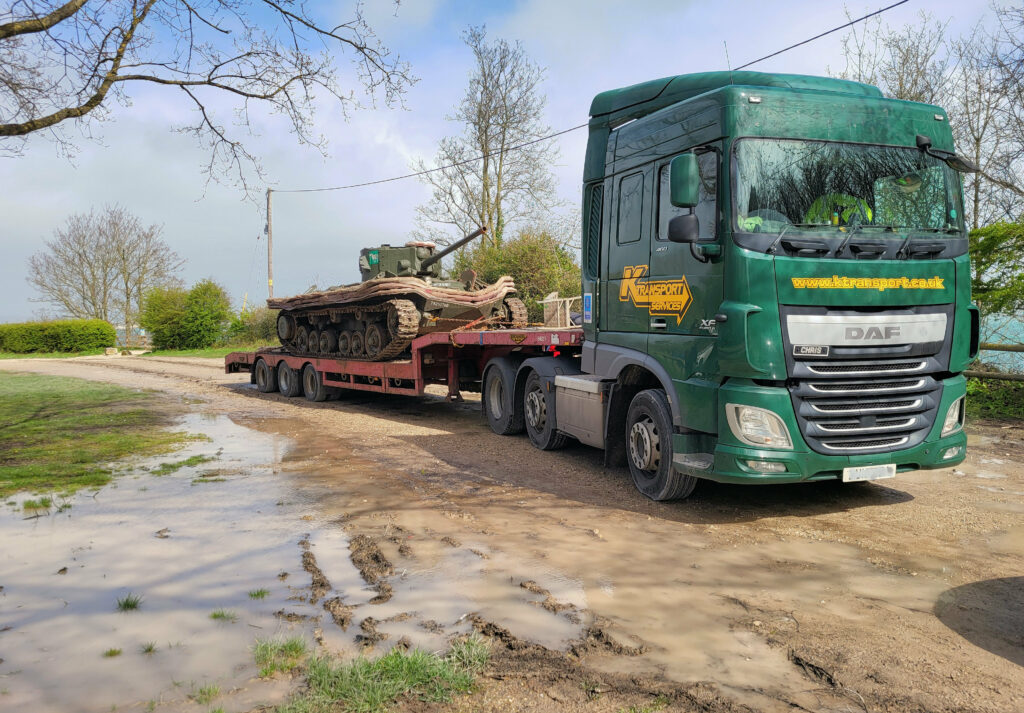
The tank was brought into Middle Beach, Studland, on a low loader, which led to some strange reactions from other drivers in Purbeck
“There were so many parts missing”
John Pearson said:
“This almost unknown amphibious tank was my first restoration – I first saw it in 1968 and patiently waited for it to come on the market, even though my first sight was not impressive, at the back of a disused part of a working factory, covered in debris.
“There were so many parts missing that it was difficult to identify it. No part of the engine covers, driver’s roof or hatches was there and only one of the radiator doors remained.
“Following the owner’s death, a sale was organised for July 1984 and I was just successful in purchasing it – but had someone else bid another £50 they would have got it as I had completely used up all the money I had and all of the credit I had arranged.”
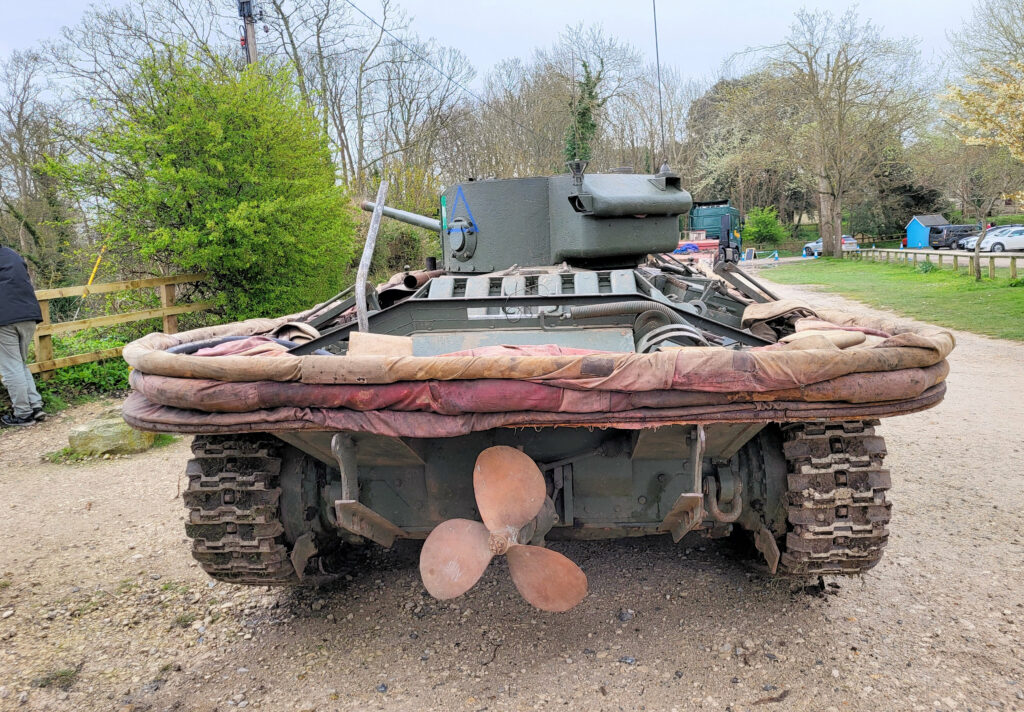
Duplex Drive Valentine tanks had a propellor for use in water leading to the name DD tank – which soldiers were quick to call Donald Duck tanks
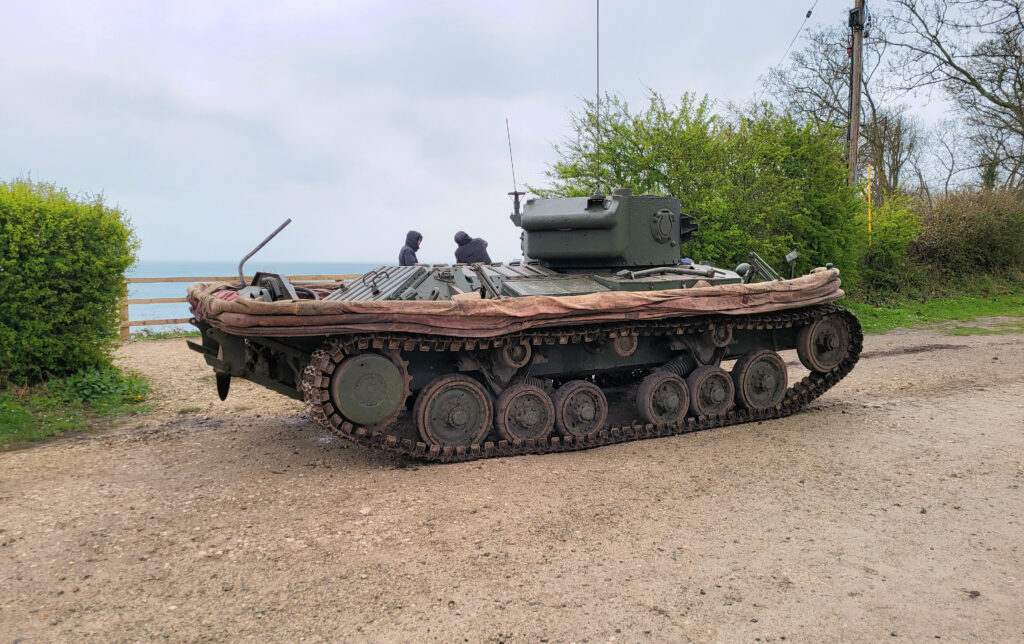
The historic tank overlooking Middle Beach in remembrance of Exercise Smash
“I never even did metalwork at school”
John added:
“I secured some storage on a farm amongst preserved buses and then ‘restoration’ started. I knew about engines but had never welded before in my life. In fact I never even did metalwork at school.
“I was approached by a scrap man who had the right to all the scrap in the fields around the building. He said he thought he had found a part of my tank and indeed he had. It was the rear right hand quarter of the turret.
“Later he found the missing quarter and the centre section of the engine covers, then he gave me permission to search on the land.
“Using a metal detector I found three of the missing four engine cover doors, the cut off rear of the platform and the turret basket. I was in business!”
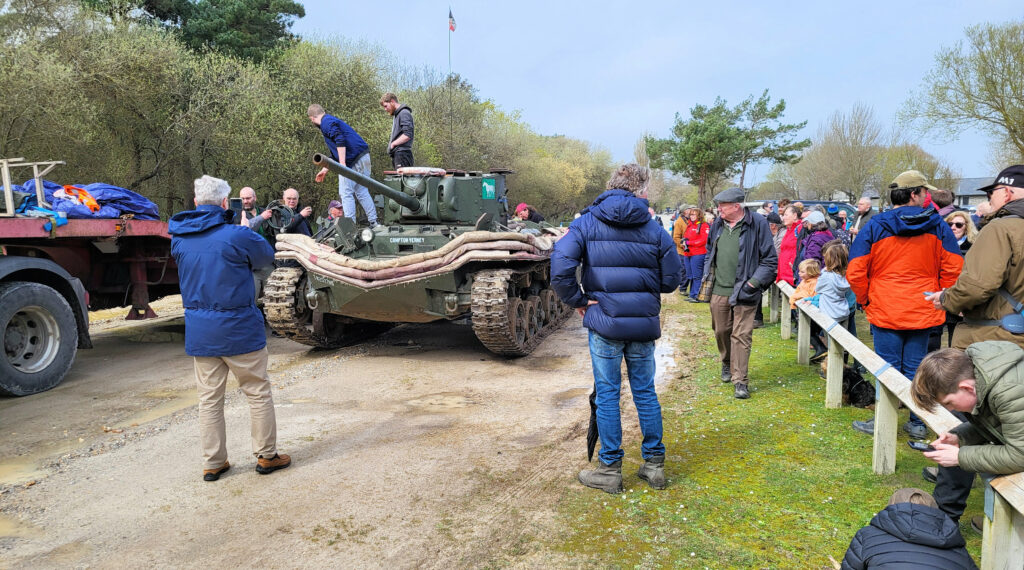
There was great interest as the DD Valentine tank arrived at Knoll beach
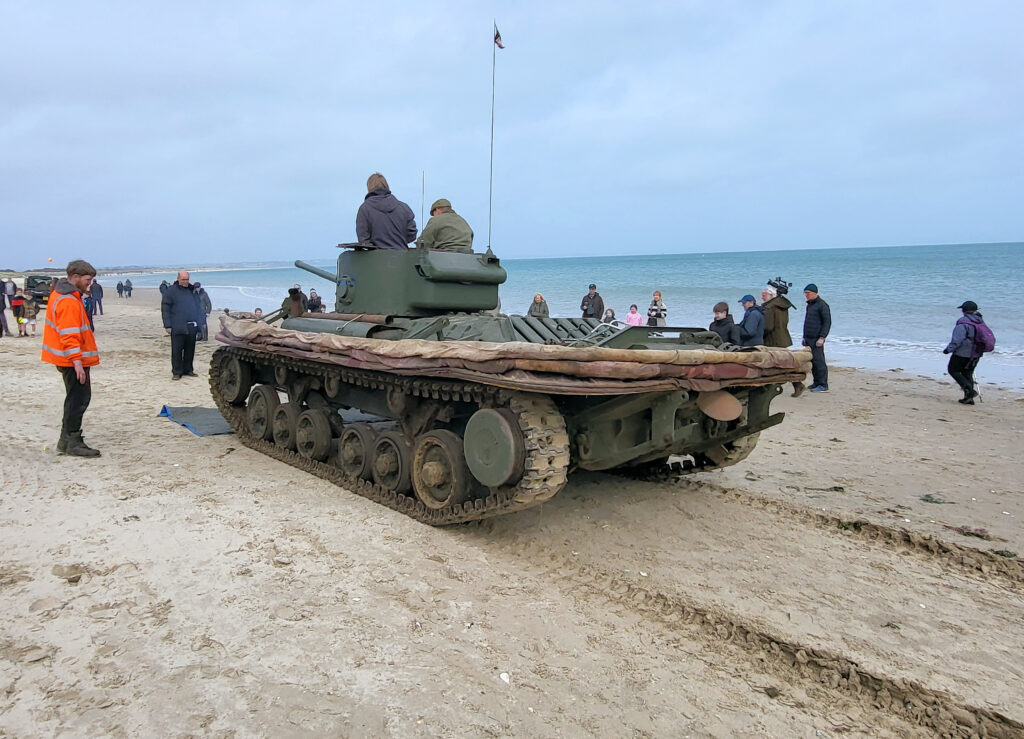
Making tracks along Knoll beach, although precautions had to be taken to stop the tank sinking into the soft sand
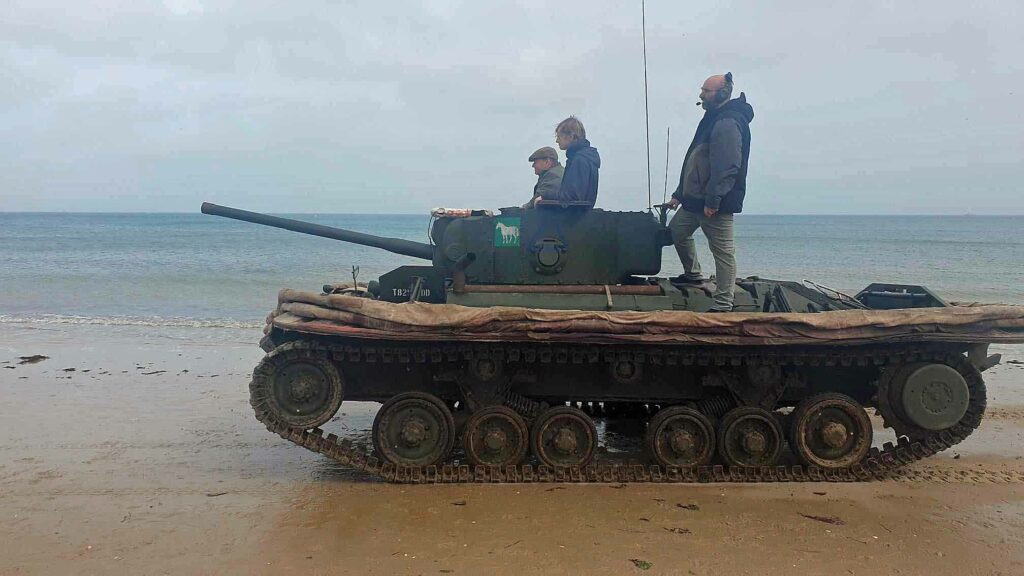
On beach patrol
Patrols up and down the beach
The world’s only surviving DD Valentine tank arrived at Middle Beach to overlook Fort Henry while the memorial service was taking place, then made its way to Knoll Beach.
A crowd of hundreds gathered to watch as it made patrols up and down the beach, stopping for photo opportunities in front of the sea which had proven so unforgiving 80 years before.
Families also joined in with guided history walks around Studland, shedding light on the ‘dragon’s teeth’ installations, World War Two pillboxes and Fort Henry itself.
Further information
- A detailed history of Exercise Smash is told by Bournemouth University on its website
